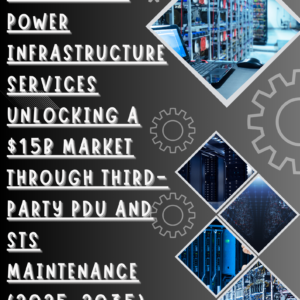1. Executive Summary
-
- Key insights into the storage market for 2025-2035
- Technology differences and inflection points driving innovation in HDDs and SSDs
2. Introduction to Storage Technologies
-
- Overview of HDD and NAND Flash SSD technologies in 2025
- The role of storage technologies in the evolving data landscape
3. HDD Technology Overview
-
- Working principle and architecture of hard disk drives
- Key performance metrics: capacity, reliability, speed, cost, and endurance in the 2025 market
- Evolution of HDD technology: PMR to SMR, HAMR (Heat-Assisted Magnetic Recording), and MAMR (Microwave-Assisted Magnetic Recording)
- Projected future of HDD technologies beyond 2025
4. NAND Flash SSD Technology Overview
-
- Working principle and architecture of NAND Flash SSDs
- Key performance metrics: speed, endurance, cost per GB, and energy efficiency
- Current and future NAND technologies: SLC, MLC, TLC, QLC, and PLC (cell levels)
- 3D NAND advancements and impact on SSD performance and capacity by 2035
5. Comparative Analysis of HDD vs NAND Flash SSD (2025-2035)
-
- Performance:
- Data access speeds, IOPS, and latency in future storage technologies
- Capacity:
- Density and storage limits projections for HDDs vs. SSDs
- Cost:
- Price per GB trends and projected future pricing over the next decade
- Power Consumption:
- Energy efficiency developments for data centers and enterprise storage
- Reliability & Durability:
- Expected endurance and failure rates for HDDs and SSDs by 2030
- Performance:
6. Upcoming Technology Inflections for HDDs
-
- HAMR and MAMR: How these innovations will shape HDD storage capacity beyond 2025
- Timeline for mass adoption and key challenges for the next decade
- Long-term viability of HDD technology in the face of SSD advancements
7. Upcoming Technology Inflections for NAND Flash SSDs
-
- Advancements in 3D NAND Technology:
- Higher layers, increased density, and enhanced endurance by 2030
- QLC and PLC NAND: Innovations and trade-offs between cost, endurance, and performance
- Potential disruptive memory technologies impacting SSDs: MRAM, ReRAM, and 3D XPoint
- Advancements in 3D NAND Technology:
8. Market Trends and Adoption (2025-2035)
-
- Growing demand for high-performance storage in data centers, AI workloads, and cloud computing
- Adoption Rates: Shifts in enterprise, consumer, and hyperscaler markets over the next 10 years
- Hybrid storage solutions: Combining HDDs and SSDs to optimize cost-performance ratios
9. Competitive Landscape and Market Share (2025-2035)
-
- Key players in the HDD and SSD markets in the upcoming decade
- HDD: Seagate, Western Digital, Toshiba
- SSD: Samsung, Micron, SK Hynix, Western Digital
- Projected market share evolution and competitive strategies
- Impact of emerging players and new storage technologies on market dynamics
- Key players in the HDD and SSD markets in the upcoming decade
10. Strategic Recommendations for 2025-2035
-
- Best practices for enterprises and consumers when choosing storage technologies
- Guidance for data centers and cloud providers regarding storage infrastructure investments
- Strategic approaches to managing long-term storage costs, performance, and technology adoption
11. Conclusion
-
- Summary of key takeaways on HDD and SSD evolution and their roles in the data ecosystem through 2035
- Final recommendations for stakeholders in the storage technology market
12. Appendices
-
- Detailed comparison tables for HDD and NAND Flash SSD technologies
- Projections of market growth and technological advancements from 2025 to 2035
- Glossary of key storage technology terms relevant for the next decade
#StorageMarket #HDDvsSSD #StorageTechnologies #2025To2035 #NANDFlashSSD #HAMR #MAMR #3DNAND #DataCenterStorage #SSDEvolution #FutureStorage #StoragePerformance #EnergyEfficiency #DataStorageTrends #AIWorkloads #CloudStorage #HybridStorage




